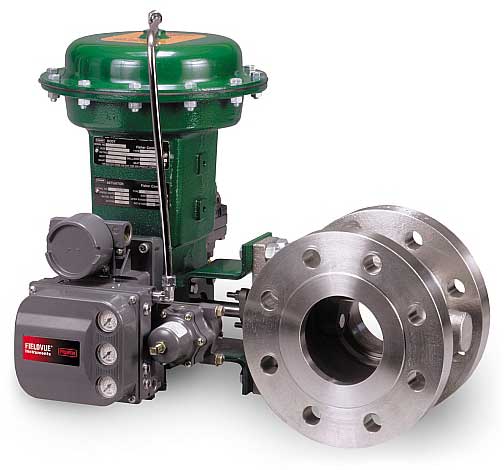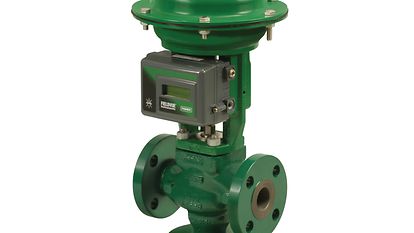Exploring the Capability of Modern Control Valves in Industrial Applications
Exploring the Capability of Modern Control Valves in Industrial Applications
Blog Article

Maximize Energy Cost Savings and Comfort With Advanced Building Automation Controls
In the world of contemporary style and facility administration, the assimilation of advanced structure automation manages stands as a crucial advancement. The convergence of technology and sustainability has actually birthed a brand-new period where power efficiency, convenience optimization, and operational streamlining are no longer remote desires but achievable realities. By using the power of automation, structures can adjust, respond, and develop in manner ins which were once unimaginable. The potential for substantial power financial savings and enhanced comfort is not just a possibility however a guarantee waiting to be satisfied. This paradigm change in building administration holds the crucial to unlocking a world where environmental conscientiousness and passenger well-being sympathetically exist together within the wall surfaces of our structures.
Energy Efficiency Perks
Power efficiency advantages can considerably reduce energy usage and operational prices in structures. Energy-efficient systems, such as advanced structure automation controls, can enhance the usage of sources like heating, air conditioning, and illumination, leading to lower energy costs over time.
Additionally, boosted energy effectiveness can extend the lifespan of structure devices and systems. By running extra successfully, heating and cooling systems, lighting fixture, and other building parts experience much less deterioration, resulting in decreased maintenance and replacement prices. Furthermore, energy-efficient structures often regulate greater home values and rental rates, offering long-term economic advantages to proprietors.
Moreover, energy performance can improve occupant comfort and performance. Correctly controlled interior environments with ideal illumination and thermal conditions create a more positive and favorable work area, bring about enhanced employee complete satisfaction and performance. Generally, the energy effectiveness benefits related to advanced structure automation controls are complex, including expense financial savings, environmental stewardship, and occupant well-being.
Boosted Comfort Control
Enhancing comfort control in structure environments requires an advanced assimilation of sophisticated automation systems for ideal passenger well-being. By utilizing innovative building automation controls, centers can customize the interior setting to fulfill the details needs and choices of occupants. These systems enable precise policy of illumination, ventilation, and temperature level, developing a effective and comfy environment. Passenger fulfillment and performance are carefully connected to thermal convenience, making it essential to have systems in area that can adjust to transforming problems in real-time.
By including these sophisticated controls, buildings can not just boost convenience however additionally enhance power performance by optimizing system operations based on actual occupancy and use patterns. Ultimately, focusing on resident convenience via sophisticated automation systems leads to a much more pleasurable and healthier interior setting.
Functional Efficiency Improvements

In addition, the execution of real-time surveillance and analytics devices makes it possible for building operators to determine energy ineffectiveness and functional abnormalities without delay. By continually monitoring power use patterns and system efficiency metrics, changes can be made in real-time to maximize energy consumption and ensure peak operational efficiency. control valves. In addition, integrating demand reaction approaches right into building automation controls can even more boost operational efficiency by dynamically adjusting energy usage based on grid conditions and prices signals
Indoor Climate Optimization
Reliable indoor climate optimization is an essential aspect of building automation controls, ensuring owners' comfort and health while making best use of power savings. By using advanced sensing units and controls, developing automation systems can continuously check and change my latest blog post temperature, humidity degrees, air high quality, and air flow to produce an ideal indoor setting. Preserving consistent and comfy problems not just boosts occupant satisfaction yet also increases productivity and overall well-being.
Indoor climate optimization likewise plays a crucial function in power efficiency. By fine-tuning heating, cooling, and ventilation systems based on real-time data and occupancy patterns, constructing automation controls can dramatically lower energy usage - control valves. Applying strategies such as demand-controlled air flow and thermal zoning can aid decrease energy waste while guaranteeing that each location of the structure obtains the needed conditioning.

Lasting Setting Development
Building automation manages not only maximize interior environment problems for energy effectiveness and passenger comfort yet likewise lay the foundation for producing a sustainable atmosphere with strategic management of sources and systems. By incorporating sophisticated structure automation technologies, such as sensing units, actuators, and smart software, go right here centers can keep track of and adjust power usage in real-time to minimize waste and decrease their carbon impact. These systems make it possible for anticipating maintenance, recognizing possible concerns prior to they rise and enhancing tools efficiency to boost long life and performance.
Furthermore, sustainable setting production extends past energy administration to encompass water conservation, waste decrease, and indoor air quality enhancement. Structure automation controls can control water usage, detect leakages, and guarantee correct waste disposal methods, adding to overall sustainability initiatives. Additionally, by keeping an eye on and regulating air flow and purification systems, these innovations boost resident wellness and productivity while lowering power usage connected with heating and cooling procedures.
Verdict
To conclude, progressed building automation manages deal substantial benefits in terms of power savings, comfort control, functional performance, indoor climate optimization, and developing a sustainable environment. By applying these controls, structures can achieve optimal performance while lowering power intake and improving resident comfort. It is obvious that using advanced automation innovation is vital in boosting structure efficiency and creating a more sustainable future.
Energy effectiveness benefits can substantially reduce energy intake and functional prices in structures. Overall, the energy efficiency benefits associated with advanced building automation controls are multifaceted, encompassing cost savings, environmental stewardship, and occupant well-being.
Additionally, including need action methods into structure automation controls can even more enhance operational efficiency by dynamically adjusting energy usage based on grid conditions and rates signals.
Structure automation controls not just look here maximize indoor climate problems for energy efficiency and resident convenience but also lay the structure for creating a sustainable environment through critical administration of resources and systems.In final thought, progressed building automation regulates deal significant benefits in terms of power savings, convenience control, operational effectiveness, indoor environment optimization, and creating a lasting environment.
Report this page